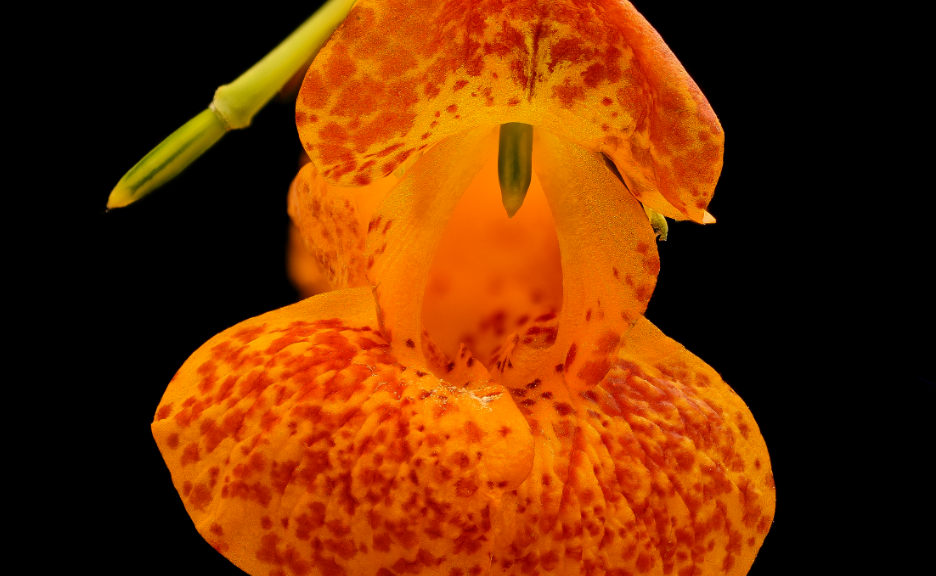101 Native Plants
For Your Garden
Looking for a new plant for your garden? More than 3,000 native plants—both herbaceous and woody–call Maryland home. It can be challenging to choose one that you like and that will like your garden.
This series explores well known favorites as well as some lesser-known ones. The full spectrum of plants will be examined: annuals, perennials, sedges, rushes, grasses, ferns, shrubs, and trees. Some will be discussed in detail while other, less common ones, have limited dossiers.
Spotted Touch-me-not or Jewelweed

The annual Impatiens capensis likes full- to part-shade and wet soil but can do well in damp or moist soil as well.
A member of the Balsaminaceae or balsam family, it is found throughout North America, zones 2 to 11.
Jewelweed grows from 2 to 5 ft. tall with a spread of 1.5 to 2.5 ft. wide. They bloom from June to September. Blossoms range from orange to orange-yellow with red spotting.
Bumble bees favor their flowers, which are just the right size for them. Their spurs at the backend are full of nectar. Butterflies and hummingbirds enjoy these annuals as well.
Its vegetation is viscous (a sticky consistency between liquid and solid). Jewelweed has been used as a wash for poison ivy. According to some sources, the berries can be toxic to humans, especially children, if ingested. Sensitivity depends on the person.
Jewelweed prolifically self-sow in the right conditions. In the wild, they may form large colonies.
Since it is an annual, it will complete its life cycle in one growing season–roots, stems and leaves die in the fall– only seeds survive. Touching a mature spotted touch-me-not flower triggers the seeds to explosively spring out away from the plant, a phenomenon that should be tried at least once a year.

Jewelweed has no serious insect or disease problems. It tolerates clay soil as well as heavy shade.
This medium maintenance plant can be used in annual, native or rain gardens; moist shade, woodland or bog gardens; and around pond and stream margins. Deer will eat jewelweed but it will regrow.
Sources: Missouri Botanical Garden Plant Finder and Lady Bird Johnson Wildlife Center. Photos: Helen Lowe Metzman, United States Geological Services.

